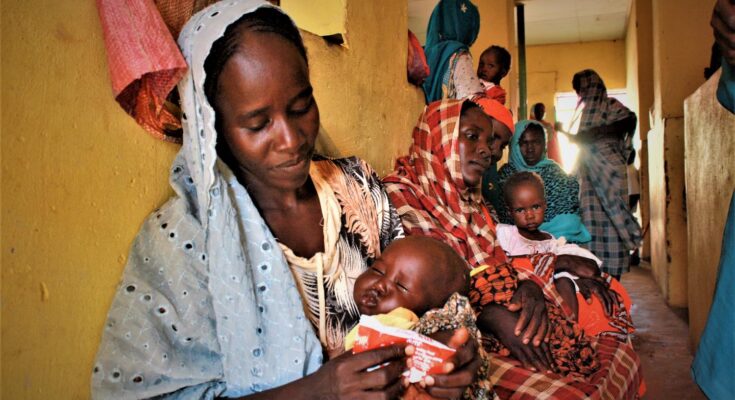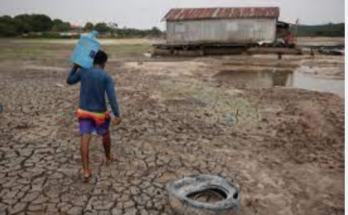UN Report Reveals Alarming Increase: 122 Million More People Pushed into Hunger Due to Multiple Crises since 2019
A recently released report by the United Nations has shed light on a distressing global phenomenon: an additional 122 million people have been plunged into hunger since 2019 due to a convergence of multiple crises. This alarming increase emphasizes the urgent need for coordinated global action to address the complex factors exacerbating food insecurity and to ensure that basic human needs are met. In this blog post, we delve into the key findings of the UN report and highlight the importance of concerted efforts to combat this growing crisis.
The Impact of Multiple Crises:
The UN report reveals that a combination of factors, including conflict, economic instability, climate change, and the COVID-19 pandemic, has contributed to a significant rise in global hunger. These crises have disrupted food production, distribution networks, and livelihoods, leaving millions of people vulnerable to food insecurity and malnutrition.
Conflict and displacement have particularly devastating effects on food security, as they disrupt agricultural activities, hinder access to markets, and displace populations from their homes and sources of income. Moreover, economic shocks and inequalities worsened by the pandemic have pushed more people into poverty, limiting their ability to afford nutritious food.
⇒Join us on Telegram for more Sure and Accurate football-winning tips every day...click here
Climate change further exacerbates the situation, leading to extreme weather events, crop failures, and diminished access to water resources. As the frequency and intensity of these climate-related challenges increase, vulnerable communities are left more susceptible to food insecurity.
The COVID-19 pandemic has emerged as a major contributing factor, compounding existing crises. Lockdowns, disruptions to supply chains, reduced incomes, and increased healthcare expenses have severely impacted the food security of already vulnerable populations.
The Call for Global Action:
The UN report underscores the urgent need for collective action on a global scale to address the growing hunger crisis. Governments, international organizations, civil society, and the private sector must collaborate to develop comprehensive strategies that tackle the root causes of food insecurity.
Immediate humanitarian assistance is crucial to provide food aid, nutrition support, and access to clean water and healthcare services to affected communities. Simultaneously, long-term efforts must focus on sustainable agricultural practices, strengthening social safety nets, promoting equitable economic opportunities, and investing in climate resilience.
In addition to addressing the immediate needs of those affected, it is imperative to prioritize the empowerment of women, who play a critical role in food production and are disproportionately impacted by hunger. Gender-responsive policies and programs can enable women to be agents of change in their communities, fostering resilience and sustainable development.
Moreover, the international community should enhance cooperation in conflict resolution, peacebuilding, and disaster risk reduction. By addressing the underlying causes of crises, it is possible to create more stable and secure environments that foster food security and human well-being.
Quotes
FAO Director-General, QU Dongyu: “Recovery from the global pandemic has been uneven, and the war in Ukraine has affected the nutritious food and healthy diets. This is the ‘new normal’ where climate change, conflict, and economic instability are pushing those on the margins even further from safety. We cannot take a business-as-usual approach.”
IFAD President, Alvaro Lario: “A world without hunger is possible. What we are missing is the investments and political will to implement solutions at scale. We can eradicate hunger if we make it a global priority. Investments in small-scale farmers and in their adaptation to climate change, access to inputs and technologies, and access to finance to set up small agribusinesses can make a difference. Small-scale producers are part of the solution. Properly supported, they can produce more food, diversify production, and supply both urban and rural markets – feeding rural areas and cities nutritious and locally grown food.’’
UNICEF Executive Director, Catherine Russell: “Malnutrition is a major threat to children’s survival, growth and development. The scale of the nutrition crisis demands a stronger response focused on children, including prioritizing access to nutritious and affordable diets and essential nutrition services, protecting children and adolescents from nutrient-poor, ultra-processed foods, and strengthening food and nutrition supply chains including for fortified and therapeutic foods for children.”
WFP Executive Director, Cindy McCain: “Malnutrition is a major threat to children’s survival, growth and development. The scale of the nutrition crisis demands a much stronger response focused on children. Solutions include prioritizing access to nutritious and affordable diets and essential nutrition services, protecting children and adolescents from nutrient-poor, ultra-processed foods, and strengthening food and nutrition supply chains, including for fortified and therapeutic foods for children.”
WHO Director-General, Dr. Tedros Adhanom Ghebreyesus: “Child wasting remains unacceptably high and there has been no progress in reducing child overweight. We need targeted public policies, investments and actions to create healthier food environments for all.”’
Notes to editors: the SOFI report
The State of Food Security and Nutrition in the World is an annual report jointly prepared by the Food and Agriculture Organization of the United Nations (FAO), the International Fund for Agricultural Development (IFAD), the United Nations Children’s Fund (UNICEF), the World Food Programme (WFP) and the World Health Organization (WHO).
Since 1999, it monitors and analyses the world’s progress towards ending hunger, achieving food security and improving nutrition. It also provides an in-depth analysis of key challenges for achieving these goals in the context of the 2030 Agenda for Sustainable Development. The report targets a wide audience, including policymakers, international organizations, academic institutions and the general public.
This year’s theme is aligned with the UN General Assembly “New Urban Agenda” and will complement and guide the discussions at the 2023 High Level Political Forum – particularly on sustainable cities and communities (SDG 11), and especially during the three-day ministerial segment of the forum held from 17 to 19 July 2023 and in the lead-up to the SDG
Summit in September.
Glossary of key terms
Acute food insecurity: food insecurity found in a specified area at a specific point in time and of a severity that threatens lives or livelihoods, or both, regardless of the causes, context or duration. Has relevance in providing strategic guidance to actions that focus on short-term objectives to prevent, mitigate or decrease severe acute food insecurity. This indicator is used in the Global Report on Food Crisis (FSIN and Global Network Against Food Crises. 2023).
Hunger: an uncomfortable or painful sensation caused by insufficient energy from diet. In this report, the term hunger is synonymous with chronic undernourishment and is measured by the prevalence of undernourishment (PoU).
Malnutrition: an abnormal physiological condition caused by inadequate, unbalanced or excessive intake of macronutrients and/or micronutrients. Malnutrition includes undernutrition (child stunting and wasting, and vitamin and mineral deficiencies) as well as overweight and obesity.
Moderate food insecurity: a level of severity of food insecurity at which people face uncertainties about their ability to obtain food and have been forced to reduce, at times during the year, the quality and/or quantity of food they consume due to lack of money or other resources. It refers to a lack of consistent access to food, which diminishes dietary quality and disrupts normal eating patterns. It is measured with the Food Insecurity Experience Scale and contributes to track the progress towards SDG Target 2.1 (Indicator 2.1.2).
Severe food insecurity: a level of severity of food insecurity at which, at some time during the year, people have run out of food, experienced hunger and at the most extreme, gone without food for a day or more. It is measured with the Food Insecurity Experience Scale and contributes to track the progress towards SDG Target 2.1 (Indicator 2.1.2).
Undernourishment: a condition in which an individual’s habitual food consumption is insufficient to provide the amount of dietary energy required to maintain a normal, active, healthy life. The prevalence of undernourishment is used to measure hunger and progress towards SDG Target 2.1 (Indicator 2.1.1).
Conclusion:
The UN report’s findings are a stark reminder of the deepening global hunger crisis, as 122 million more people have fallen into the clutches of food insecurity since 2019. The convergence of multiple crises, including conflict, economic instability, climate change, and the COVID-19 pandemic, has pushed vulnerable populations to the brink. Urgent action is needed to address the root causes, provide immediate humanitarian assistance, and implement long-term solutions that foster resilience and sustainability.
The international community must unite in a concerted effort to tackle these challenges, employing a comprehensive approach that promotes peace, equitable development, and climate resilience. By prioritizing the eradication of hunger and ensuring access to nutritious food for all, we can pave the way for a more just and prosperous future for millions of people worldwide.






